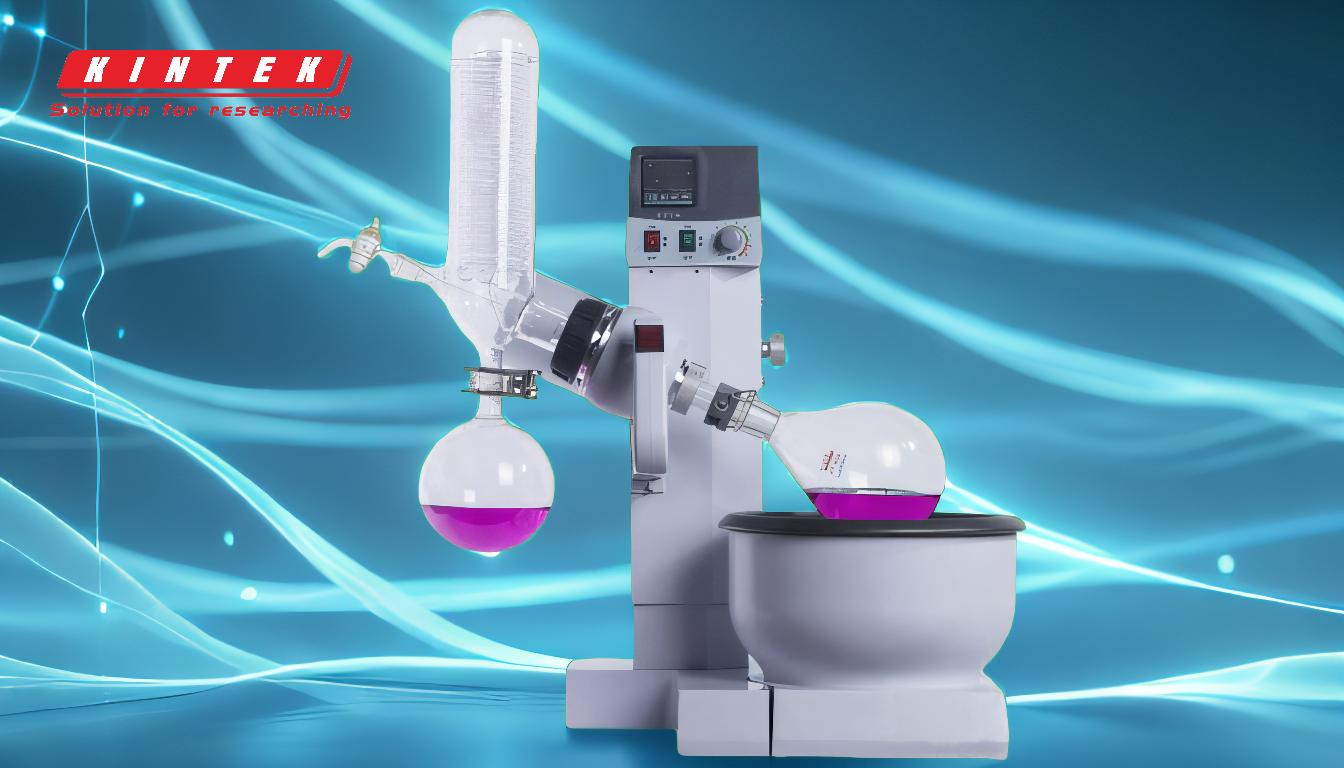Cleaning the condenser on a rotary evaporator is a critical maintenance task to ensure the equipment operates efficiently and avoids contamination. The process involves disassembling the condenser, using appropriate cleaning agents, and following safety protocols. Here's a detailed guide to help you clean the condenser effectively.
Key Points Explained:

-
Disassembly of the Condenser:
- Cool Down: Ensure the condenser has cooled down completely before attempting to disassemble it to avoid burns or damage.
- Remove Components: Carefully detach the condenser from the rotary evaporator. This typically involves unscrewing or unclamping the condenser from its mount.
- Dispose of Contents: Properly dispose of any residual solvents or materials in the condenser according to local regulations.
-
Cleaning the Condenser:
- Use Appropriate Solvents: For general cleaning, use a solvent like acetone, but ensure it is compatible with the condenser material. Avoid using harsh chemicals that can damage the condenser.
- Soak in Acid Solution: If there is significant buildup, particularly algae, soak the condenser in a dilute nitric acid or hydrochloric acid solution for a few hours. This helps to dissolve stubborn residues.
- Rinse Thoroughly: After soaking, rinse the condenser thoroughly with distilled water to remove any acid residue. Ensure all parts are rinsed multiple times to avoid contamination.
-
Drying and Reassembly:
- Air Dry: Allow the condenser to air dry completely before reassembly. This prevents moisture from affecting the vacuum system.
- Reassemble Carefully: Reattach the condenser to the rotary evaporator, ensuring all connections are secure and properly sealed to maintain the vacuum.
-
Safety Precautions:
- Wear Protective Gear: Always wear gloves, goggles, and a lab coat when handling acids or solvents.
- Proper Ventilation: Perform the cleaning in a well-ventilated area or under a fume hood to avoid inhaling fumes.
- Follow Manufacturer’s Guidelines: Adhere to the manufacturer’s instructions for cleaning and maintenance to avoid damaging the equipment.
-
Preventive Maintenance:
- Regular Cleaning: Clean the condenser regularly to prevent buildup and maintain optimal performance.
- Use Distilled Water: Use distilled water in the heating bath to minimize scale buildup and algae growth.
- Inspect for Damage: Regularly inspect the condenser for any signs of wear or damage and replace parts as necessary.
By following these steps, you can ensure that your rotary evaporator’s condenser remains clean and functional, thereby extending the life of your equipment and maintaining the purity of your samples.
Summary Table:
| Step | Details |
|---|---|
| Disassembly | Cool down, remove components, and dispose of contents safely. |
| Cleaning | Use compatible solvents (e.g., acetone) or acid solutions for stubborn residues. Rinse thoroughly. |
| Drying & Reassembly | Air dry completely and reassemble carefully to maintain vacuum integrity. |
| Safety Precautions | Wear protective gear, ensure proper ventilation, and follow manufacturer guidelines. |
| Preventive Maintenance | Clean regularly, use distilled water, and inspect for damage. |
Need help maintaining your rotary evaporator? Contact our experts today for personalized advice!












